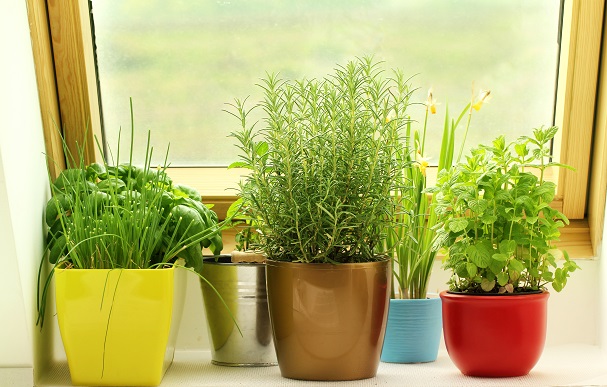
Just because the weather outside is frightful doesn’t mean you have to stop dreaming green. Move your garden indoors!
You may have considered it before, but moving your garden indoors is a great way to not only provide you and your family with fresh and organic herbs, fruits and vegetables during the winter months, but it also provides you with the same fun activity you enjoy during the spring and summer to help keep your mind off the yucky winter weather.
Want to know how to get started? Indoor gardening does require a little more preparation, equipment and attention than traditional gardening, but we’ll walk you through what you need and what you need to know.
Finding the right space
Your garden can take up as much or as little space as you want, depending on what you are growing. You can dedicate a corner of the living room or go all out and design a room specifically for gardening if you want!
Just bear in mind a couple of things:
- Larger growers are obviously going to need more space, and may require an entire table or bench. Don’t limit your growing opportunities by not having enough space.
- Factor in lighting when you pick your spot. If you want to grow on a shelf make sure it can receive adequate lighting and/or consider that each level may require a light of its own.
- Gardening can be messy! Be sure you lay down a tarp or do your gardening on tile, linoleum or stone – somewhere you don’t mind spilling water or soil.
Now that you’ve picked your spot, it’s time to talk lights!
Lighting
Along side moisture, lighting is the most important part of growing healthy plants. Because of this, it is crucial that you choose the right lights for your plants and know what to avoid.
Incandescent lighting – the kind of light bulbs found throughout your home – are easily available and inexpensive, but are actually one of your worst options. These kinds of bulbs produce far more heat than light, which can be seriously harmful to you plants. They also do not provide the specific kind of lighting that growers are looking for.
The best and most readily available option for most is fluorescent lighting. They don’t use near the amount of energy as incandescents, last much longer and produce a wider spectrum of light – something that healthy plants require strongly. You should be able to find and install them fairly easily. The biggest downside of fluorescents is that, although potent, do not have the strength to support fruit bearing plants.
Other light options, such as high-intensity discharge lights (HIDs) are more ideal for these kinds of plants, but can be very expensive and are harder to obtain. You can learn more about your options here.
Other tips and tricks
With a spot and lights ready to go you are well on your way to growing your new indoor garden. However, acclimating to the inside can be tough for plants and require more attention and care than outdoor gardens. Here are a few things you can do to help them grow better.
- Run your lights for around 14 hours a day. Some plants will require more or even less, but 14 is a good starting point.
- Keep your space at 65-75 degrees F.
- Air circulation is important to plants. Make sure if they are not in an open space to give them a little fan to help move air around. Even if they are in an open area, a fan isn’t a bad idea.
- A certain level of humidity is vital for plants, but this can be hard to achieve inside your house during colder months. Try misting them daily, keeping a tray of water filled with rocks nearby and keeping plants close together.
It can be tricky to get started, but an indoor garden can be so rewarding! If you need help getting started on your outdoor garden next year, read our guide on how to get growing!


